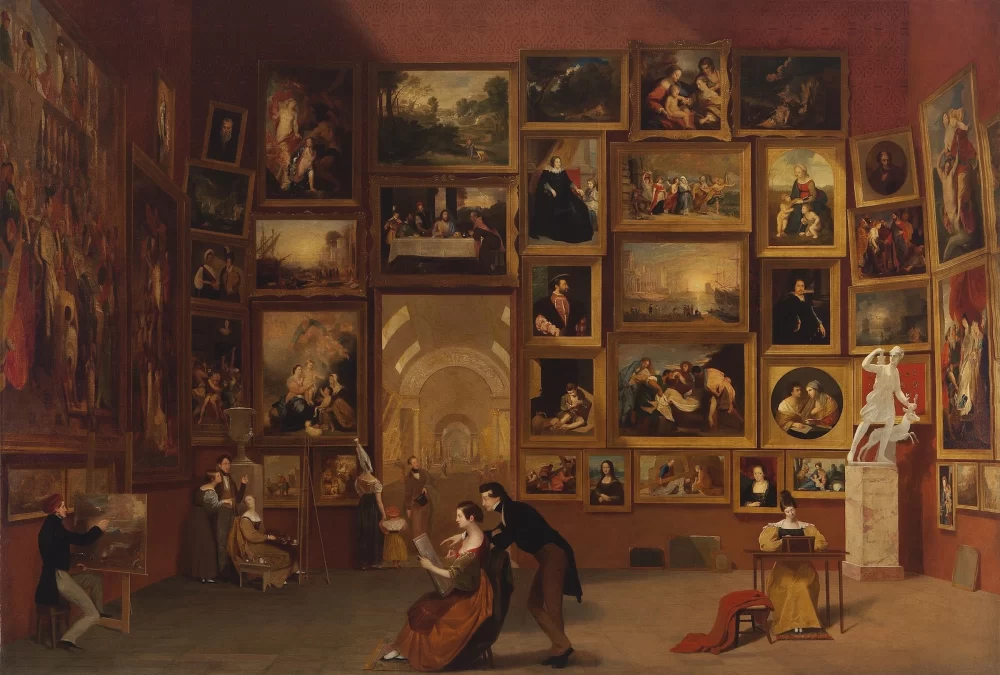A quote often attributed to newspaperman Horace Greeley circa 1840, “Go West Young Man” evokes images of pioneers, wagon trains, the Oregon Trail, and the American bravado of taking on a monumental challenge and, not only overcoming it, but thriving in the conquest.
Without parsing out the mythical elements of this imagery, and not wanting to destroy it by pointing out that conquest requires conquerees (my word), “Go West, Young Man” captures the spirit of American expansion in the nineteenth century: an Anglo-American ideal beginning with ancient Greece, embraced centuries later in Western Europe, carried across the Atlantic, codified in the country’s founding documents, and ultimately driven even further west during an ever-pulsing nineteenth century migration of those ideals across the continent and to the Pacific. Indeed, so heady were these days of Westward Expansion (upper case required) that other nineteenth century migrations have been lost in the popular imagination. Addressing this shortcoming in the historical record is no less than American icon David McCullough, acclaimed narrative historian and the long-standing host of PBS’s The American Experience.
In The Greater Journey: Americans in Paris (2011), McCullough introduces (re-introduces) Americans who, in the generations following American independence, traveled east to better themselves in the arts, medicine, music, literature, and more. The link they established from the Old World to the New supplemented the American drive for economic prosperity with a touch of class, and facilitated a more-refined vision of American culture.
Personifying the enduring Franco-American friendship are the Marquis de Lafayette and Alexis de Tocqueville. Lafayette, whose military support made American independence a reality, went on a grand tour of the United States in the 1820s where he was treated as a celebrity not unlike the American heroes of that war. Tocqueville made an equally grand exploration of the United States in the 1830s, not as a celebrity but, as an observer, a social scientist. His Democracy in America was published as a testament to the possibilities of liberty and representative government. Tocqueville’s treatise also gave the French the opportunity to examine their own recent past; following the French Revolution of 1789 and the troubling direction it took.
From 1830 to 1900, an amazing cast of well-known American characters made their way to Paris, the cultural capital of Europe, including writers such as Oliver Wendell Holmes, Henry Wadsworth Longfellow, Ralph Waldo Emerson, Nathaniel Hawthorne, and Harriett Beecher Stowe.
Some of the most famous American artists of the nineteenth century found their inspiration in Paris: painters Mary Cassatt and John Singer Sargent, sculptor Augustus Saint-Gaudens and pianist/composer Louis Moreau Gottschalk.
Many of these Americans in Paris resemble the Renaissance ideal of living a life in pursuit of beauty, knowledge, and personal fulfillment. Epitomizing McCullough’s entire discourse on Americans in Paris is Samuel F.B. Morse. In his majestic Gallery of the Louvre, a single painting made up of the reproduction of dozens of paintings, Morse memorializes the world’s most famous museum. In the foreground, students (copyists) are quietly attempting to recreate the masters in a scene filled with a startling variety of works by Rembrandt, Leonardo da Vinci, Titian, Anthony Van Dyck, and many more.
David McCullough juxtaposes Morse as painter with Morse as inventor; whose electromagnetic telegraph and eponymous code transformed human long-distance communication; messages that once traveled the speed of horses and sailing ships, now traveled at more than half the speed of light. Such was the inspiration of the whole of Paris; visiting the Louvre, strolling the streets, attending the opera, all the while immersing themselves in a world that shaped their outlook and, in turn, transplanted that outlook back to America.
Another famous American in Paris is most famous for being bludgeoned nearly to death on the floor of the US Senate. Charles Sumner traveled to Paris to study Greek history, civil law, geology and more in the late 1830s. Perhaps the most significant part of this experience derived from Sumner’s observations of his fellow students. While attending a Sorbonne lecture on ancient philosophy, Sumner noticed a number of black students who participated in the class with “the easy, jaunty air of young men of fashion.”
Prior to this experience, Sumner’s view of blacks followed his observations of slaves toiling away in the American South, “They appear to be nothing more than moving masses of flesh,” he lamented, “unendowed with anything of intelligence above the brutes.”
It was the Parisian atmosphere, however, unencumbered by the nastiness of human bondage, where Sumner realized that, “It must be then that the distance between free blacks and whites among us is derived from education, and does not exist in the nature of things.”
Upon returning home, Sumner became one of the leading anti-slavery voices in Congress. Indeed, the bludgeoning he took on the Senate floor was delivered by a South Carolina congressman following a passionate anti-slavery speech Sumner had given two days before.
Fugitive slave and ardent abolitionist William Wells Brown, whose story parallels that of the more-renowned Frederick Douglass, was inspired by Parisian influences as well. Another anti-slavery force found herself in Paris escaping the turmoil surrounding the publication of Uncle Tom’s Cabin, a critical flashpoint leading up to the American Civil War. Like Charles Sumner, Harriett Beecher Stowe discovered in a more enlightened France that, in America, race was a social construct driven by economic interests.
As an historian and teacher, I tended to fall for the Westward Expansion model of America’s past emphasized by Horace Greeley and the pioneers–and they are wonderful stories. Thanks to David McCullough, I find myself rethinking, what else I have missed by stressing dramatic tales of outward adventure over the more subtle influences that have shaped who we really are… or what we might someday become.
Here is a beautiful video tribute to and explanation of Morse’s Gallery of the Louvre.





